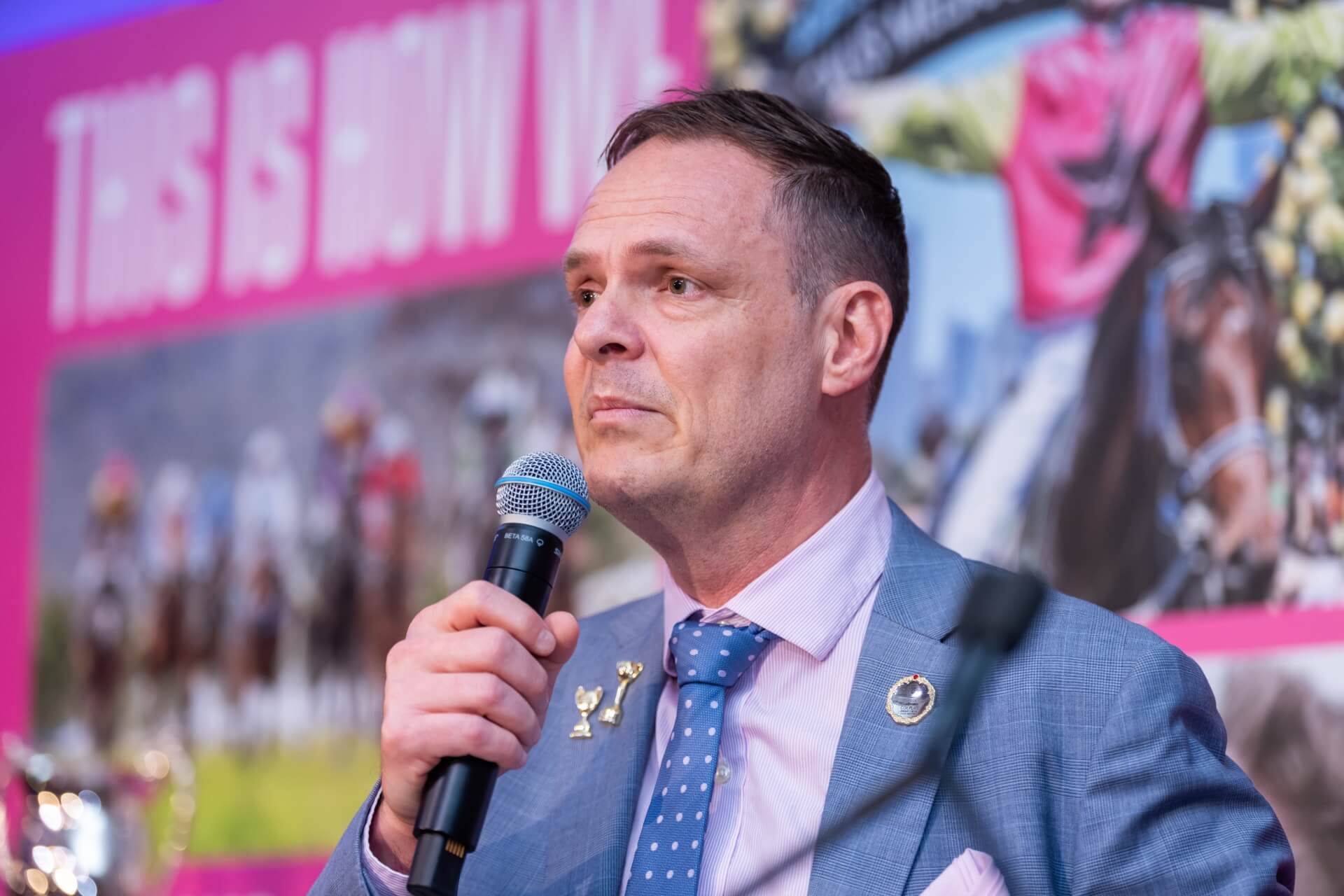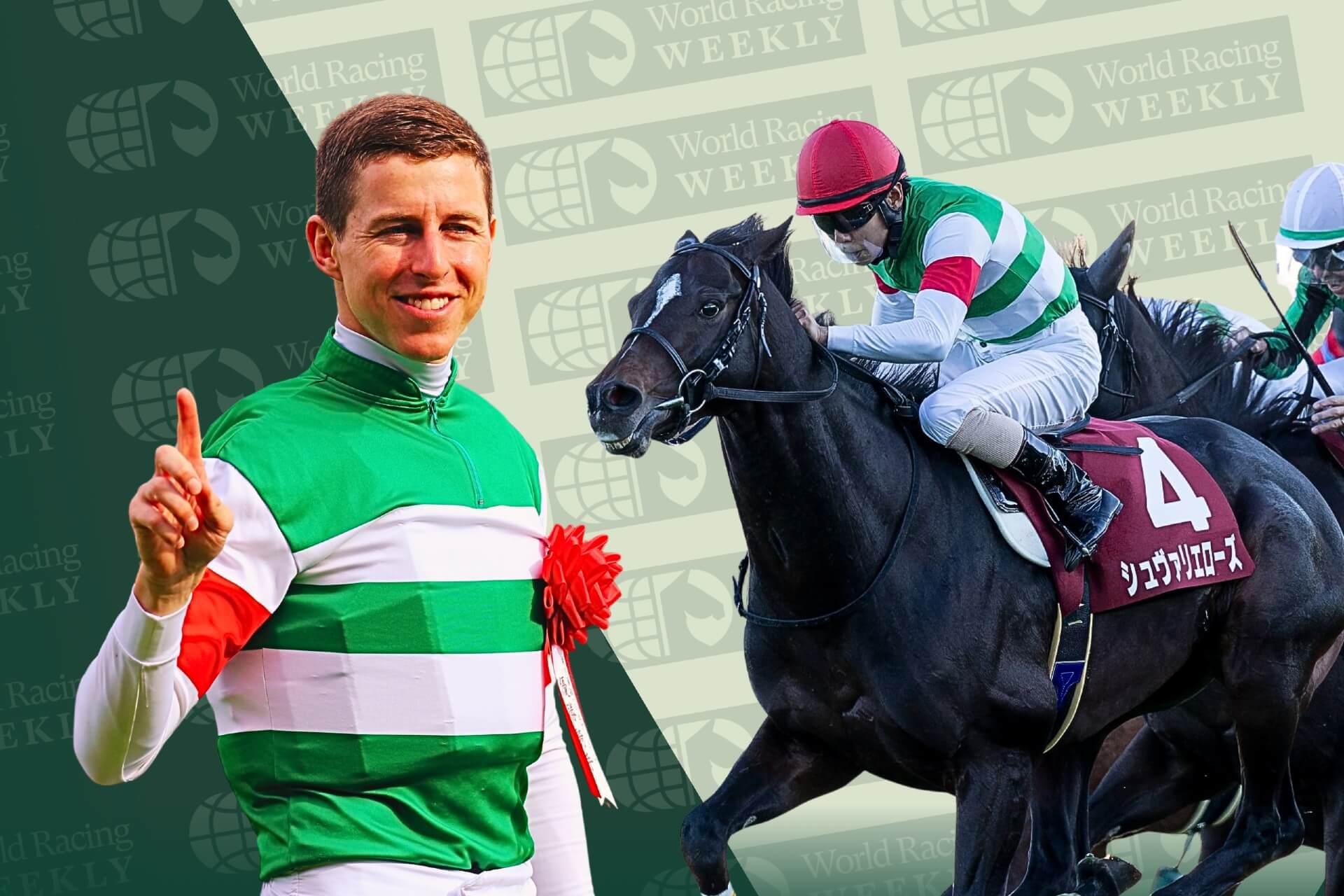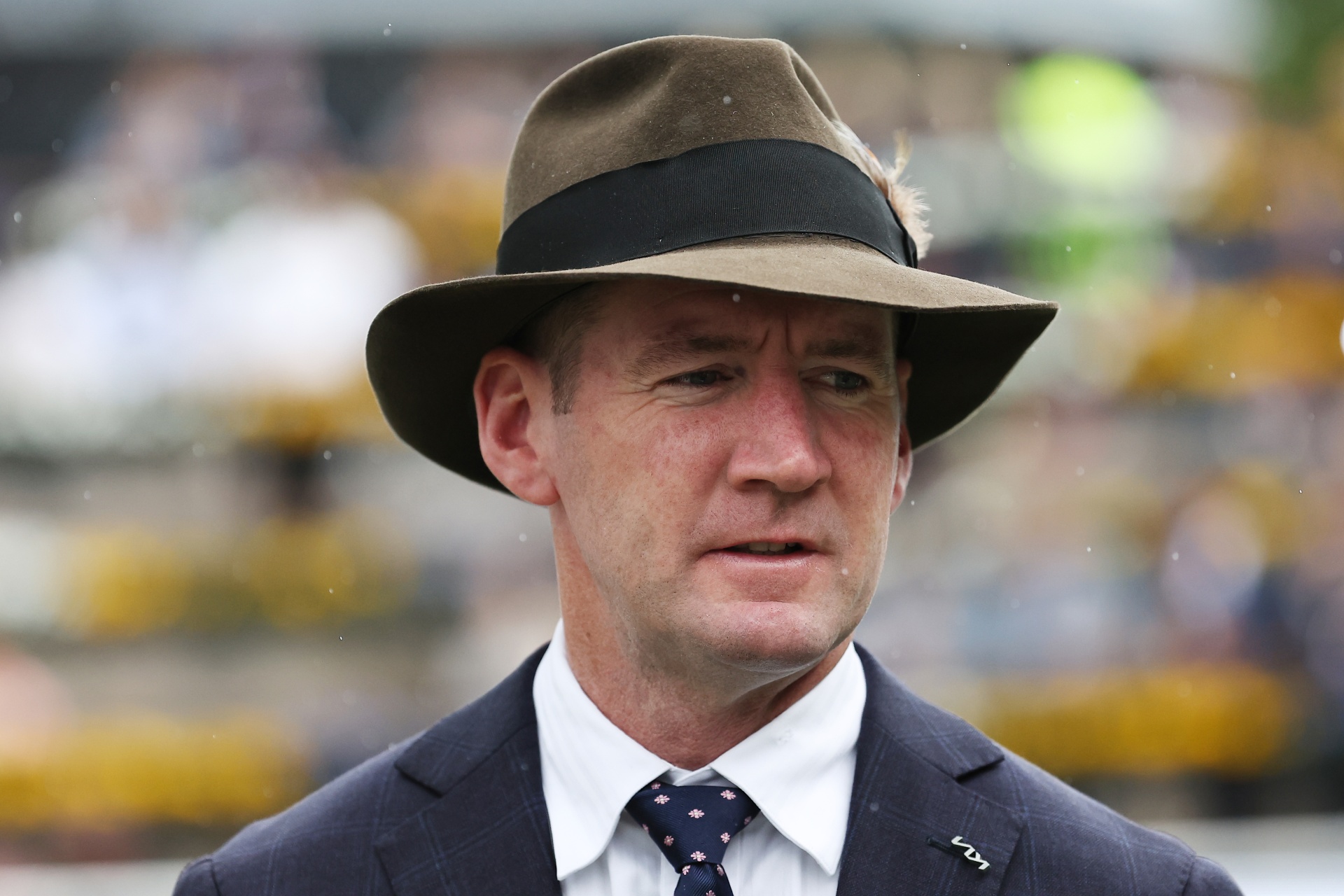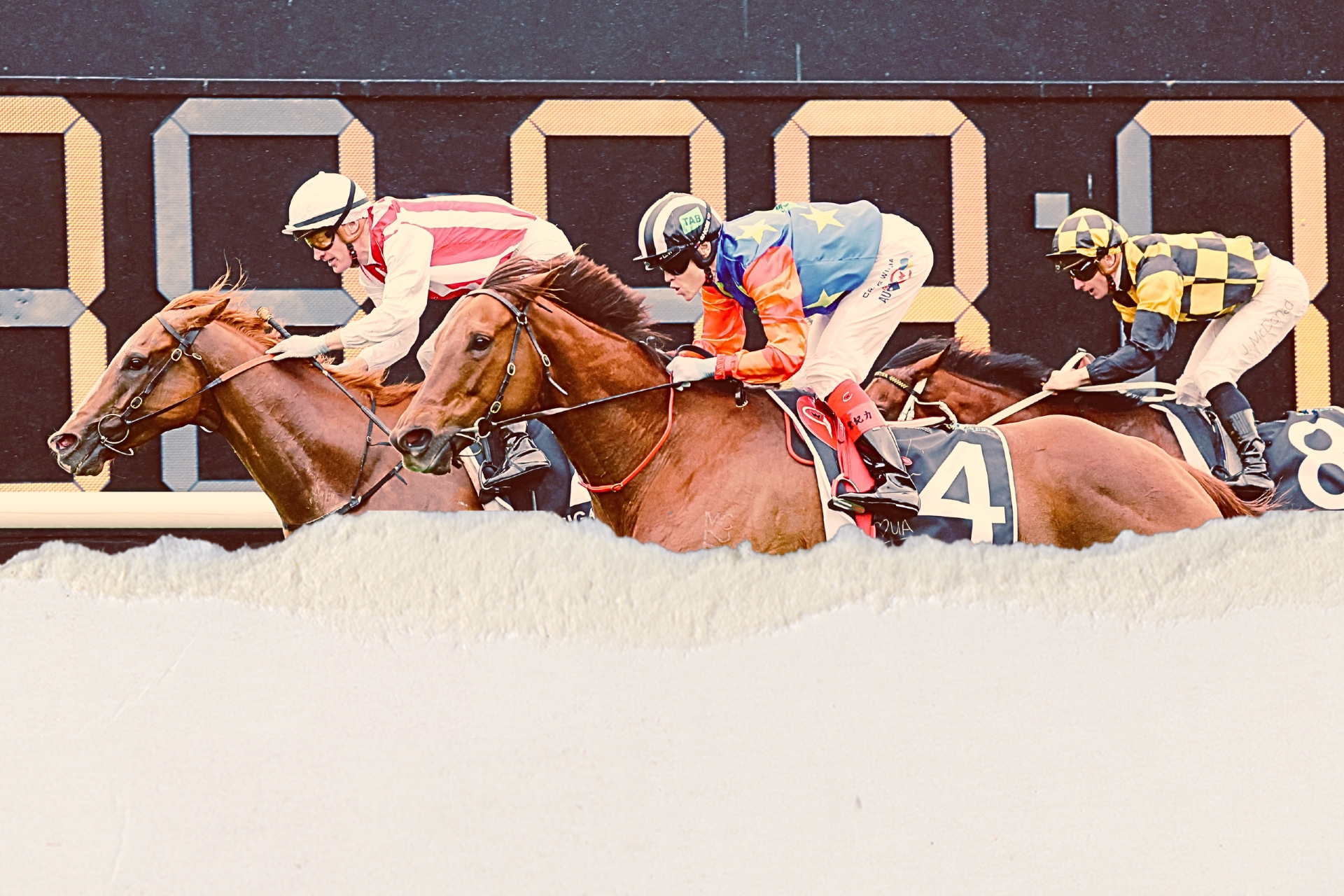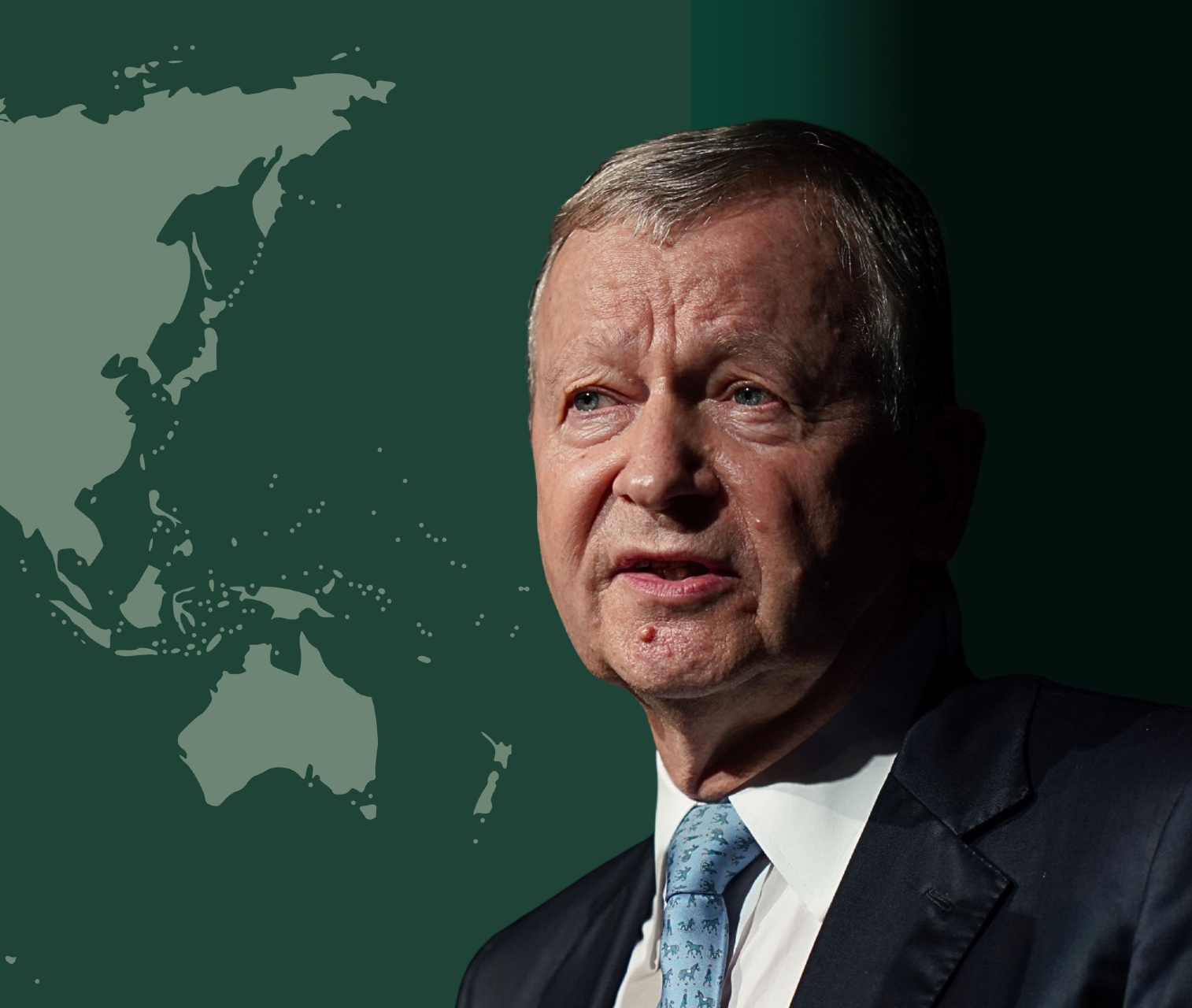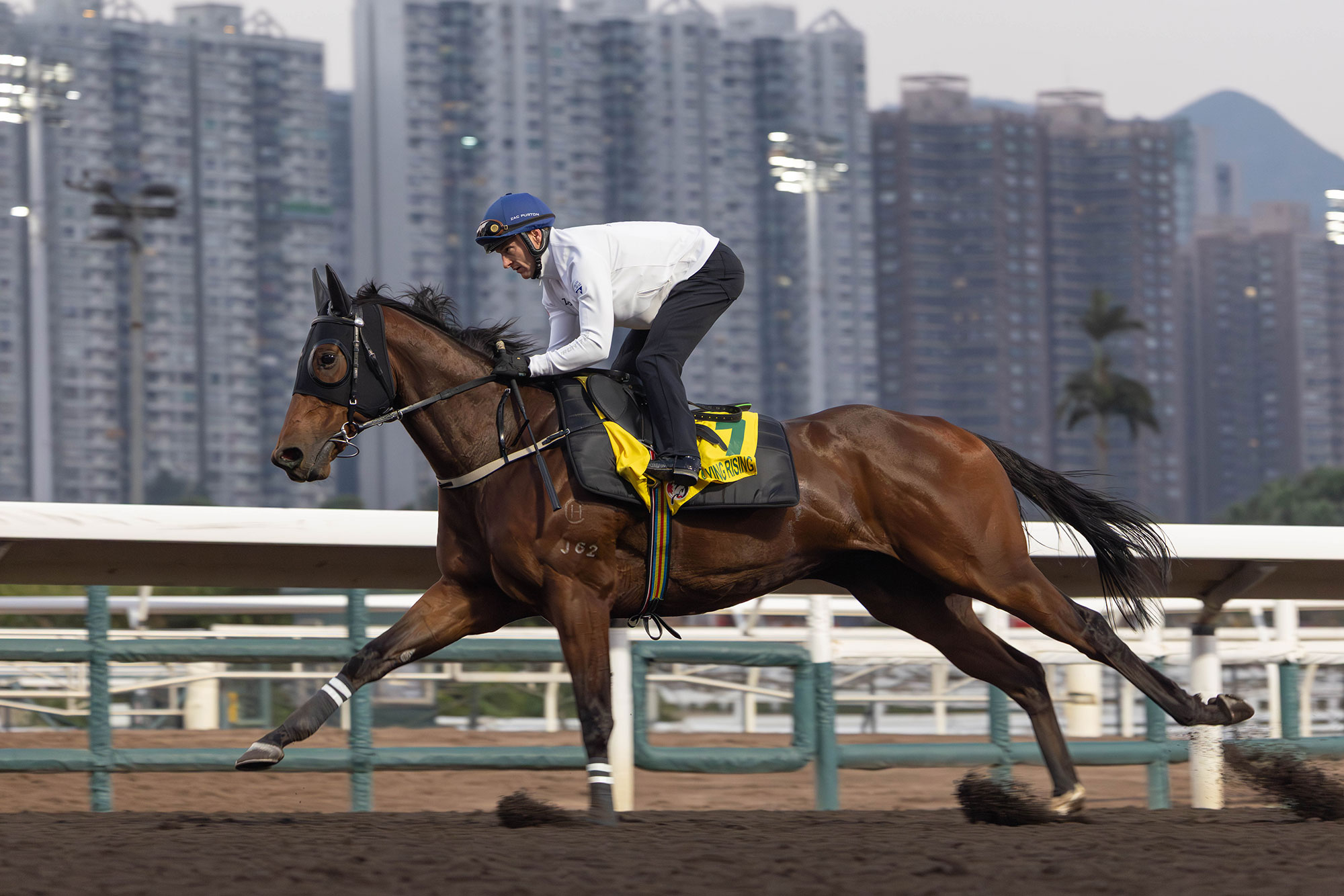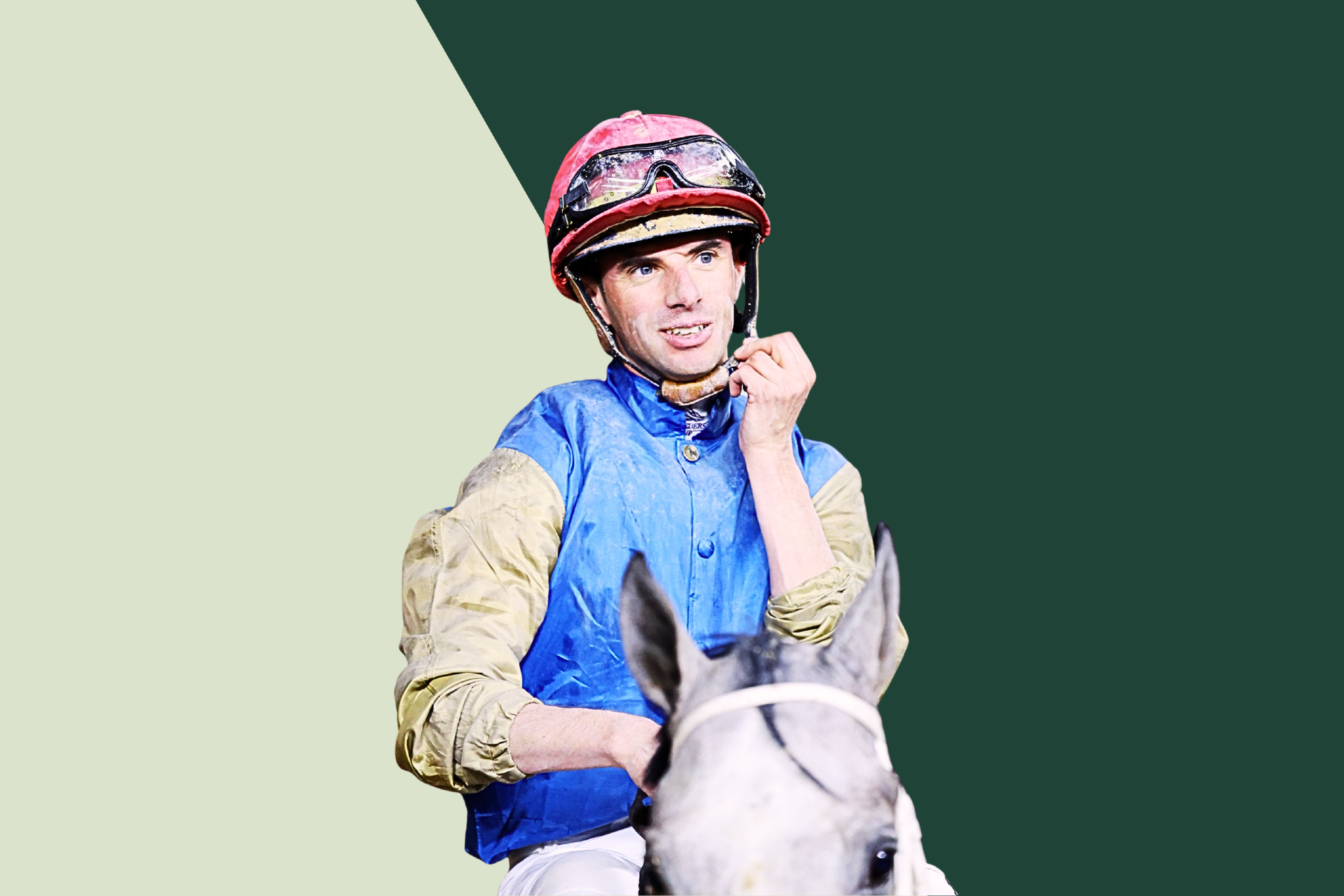Aaron Morrison walked into the hot seat as Racing Victoria chief executive when, in his own words, it felt like a “mutiny”.
Now, after a year in the top job and in the countdown to Melbourne’s world famous spring carnival, he opens up to Idol Horse on a range of topics, including Australia’s wagering landscape reaching a “tipping point”, punters being banned for winning, the future of Melbourne’s three racing clubs, his relationship with Racing NSW boss Peter V’landys and the country’s mega-sized stables.
Idol Horse: It’s been just over a year since you took over the Racing Victoria chief executive job on a permanent basis. The regulator was coming out of a very divisive time when the board narrowly survived a spill. How have you found the job so far?
Aaron Morrison: What I walked into when I first took on the interim CEO was a bit of a mess. It was almost like a mutiny. Our stakeholders were very upset with the board of Racing Victoria and the current CEO, and I think we had lost a lot of trust and led us to become really fractured and to the point where there was the attempted board spill, which resulted in a couple of the board members leaving. We lost the chairman and a new chairman came in and then they appointed me as the interim CEO.
One of my main priorities was just to really work on restoring stability and rebuilding trust with our stakeholders, and probably just pivoting our focus from a Racing Victoria perspective back to the participants or the people that are investing so heavily in the sport. Making them the priority focus again. I feel that we’ve been successful in doing that, and I think I’ve been successful now in finding that stability.
I feel a lot more comfortable and confident about things. And I think in Victoria, we’ve actually quite well aligned now. But I think being transparent is very, very important and helpful.
IH: The Australian wagering landscape is an area you know well and a particular focus. The COVID boom is long gone now, but are you finding turnover levels are stabilising a little bit?
AM: They are and I think we’re seeing that nationally from what I can tell. Speaking with colleagues and our partners, racing as turnover has stabilised. We’re certainly a long way from the COVID peaks, but we’re probably still 15 per cent above the pre-COVID turnover levels.
I think we saw it from the last spring carnival, we were down probably the first half of the last financial year – 10 per cent plus – and then it was really as we approached the Melbourne Cup Carnival and the marquee races were coming up, we actually saw turnover grow. But we’ve still got to make sure that we’re getting the settings right before the wagering operators and for our partners to continue promote our sport.
IH: It appears the point of consumption tax and some of the levies on bookmakers have really had a big impact in the last few years. Has the amount of taxes burdened on wagering operators in Australia gone too far now?
AM: I would say, and I’ve been pretty clear about this, we’re at a tipping point now. We can’t have the point of consumption tax rates increase any further than they are at the moment. There’s talk in Queensland about potentially reviewing and reducing them back again.
I’ve spent a lot of time working on it, and the cost of product on Victorian racing alone from 2018 was about 38 cents in the dollar. Now it’s above 60 cents in a dollar on a blended national basis. So that’s a combination of product fees, which we’ve tried to hold and maintain for a while, point of consumption taxes nationally, because we have obviously people betting on our product from all over Australia, and other regulatory imposts as well. Then there’s also the cost of generosities and promotions.
And we’re seeing that lead to the operating margins of those wagering operators being compressed. They’re very rational corporate businesses and they respond to try and protect their margins and unfortunately, what that’s meant in recent times is we’re seeing less generosity, which really drove the market for the last four or five years. They’re the money back specials and those types of promos.
So there’s less generosity, you’re seeing higher over rounds, so worse odds to the customers. It’s a trend that is pretty concerning and you can trace them back to taxation and regulatory pressure.
Our job is to try and work out whether we can do something to mitigate that, whilst at the same time, we’ve got to maximise our income.
IH: How concerned are you by the spate of punters, some who might not even be winning that much, having their accounts closed down by online bookmakers protecting their business model?
AM: It’s an interesting one because what we’re seeing is some of the wagering operators being forced to run their businesses differently because of the requirements around knowing your customers from an anti-money laundering perspective. At some level, that’s very legitimate. At other times, I’m not sure it is.
I think you’ve got a lot of smaller operators who sometimes pick and choose when to apply those rules and are making it difficult for customers to get on, or even access their funds, and I don’t like that.
Bookmaking is a special kind of risk business where you put out your best odds and you take the customer on. You take that risk on and a lot of the businesses these days are moving away from that principle, which I don’t necessarily like.
IH: But can you do anything about that?
AM: Well, we could potentially, but it’s really then up to the regulator. Most of the corporates are licensed in the Northern Territory, and we also regulate and license some bookmakers here in Victoria. But we would need to work with some of the bigger federal agencies as well on those types of matters. So, it’s not as easy as it seems.
The challenge, I guess, is that you know we’re losing customers that might be legitimate racing punters and we might be driving them offshore. I do think we’re seeing more and more evidence that Australian customers are being actively targeted and reasonable turnover is going offshore to some of these operators.
IH: If you had one message to Australian Prime Minister Anthony Albanese and the federal government about these looming gambling advertising restrictions on behalf of the racing industry, what would it be?
AM: It really is that racing is fundamentally different from other sports in respect of its relationship with wagering. Racing and wagering are part of the same product. There really is no racing without wagering, vice versa.
All of our customers have an absolute expectation of being served up with wagering promotions and offers as part of the product. Recognising that is important, and we need to be effectively carved out from any of the advertising restrictions that are being proposed. The former minister has written to us to assure us that that would be the case, and we remain pretty encouraged by what we’re hearing from the current government now post election.
More recently the conversation has gone from the broadcast restrictions onto social and digital. We’re trying to encourage them to be sensible around that. Use the tools and technology that exists around social media. They’re about to put in age gating technology nationally. They should be using similar tools and technology to manage that so minors don’t get served up advertising. There are tools there to be utilised and it needs to be nuanced, not just a big blanket restriction.
IH: It’s something that has been on the agenda for years, but what are your thoughts on members of all three of Melbourne’s race clubs having access to other racetracks year round?
AM: That’s something I’d like to try and deliver in the new term. I think we can. There’s a lot of other ways in which the clubs can co-operate and we all want to be rowing in the same direction with our stakeholders being aligned.
There are opportunities without having to go to full mergers necessarily, for meaningful shared services. There are a whole bunch of things that the clubs do the same as one another, and they employ different people and they’ve got governance structures that don’t necessarily need to exist. So, there are plenty of operating efficiency opportunities that could be delivered – and I think will be delivered without necessarily having to go into that identity of the club part of it.
But if someone wanted to say, ‘we want to put a merger proposal on the table’, then we would seriously consider it. Long term, some form of consolidation, whether it’s operationally or through to a whole measure, makes absolute sense. We just have too many entities doing the same things at the moment.
IH: We know the Melbourne Cup was long ago transformed into a global race, but a lot of Australian punters struggle to assess the form of fly-in, fly-out runners from the northern hemisphere, whether it be Europe or Japan and even America this year. What’s the right number of overseas-trained horses for the Cup each year?
AM: The international (involvement) adds to the storyline. The narrative around the Cup, that’s where it’s really important. Aussie punters in the past who said, ‘well, there’s too many horses here. I just can’t read the form lines …’ live in an increasingly globalised world and one where we actually have a lot of international content on our Racing.com platform. It’s a more global world. I think as long as we’re providing enough form and information, then half a dozen plus international runners really adds to the appeal of the race.
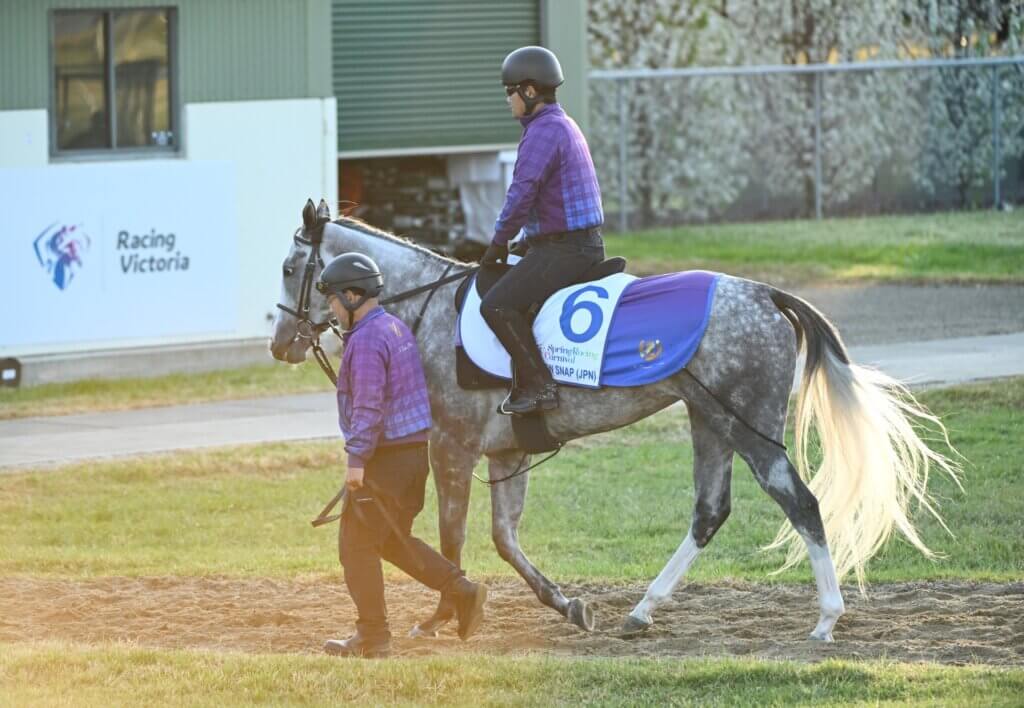
IH: Is there a way where we can get to an agreement between everyone in Australia about the pattern?
AM: That’s a broad statement. I would say my first answer is ‘that’s challenging’. The status at the moment is we’ve got some guidelines in Australia that the Racing Australia board have attempted to put up as far back as September last year that weren’t endorsed by the Asian Pattern Committee, and not endorsed by other international bodies because they weren’t compliant with the Asian ground rules and other international standards. The main thing that made them non-compliant was a lack of a pattern committee, and some other specific aspects of the guidelines and processes that were inconsistent.
Fast forward, and if I was to simplify it, that’s still the case today. I think we’re in exactly the same position.
What we’ve been focused on from a Victorian perspective is probably two things. Firstly, is genuine and meaningful consultation with the industry who have expressed their concerns in a strong manner. Secondly, we have a strong view that the people who are going to be most affected by this are breeders and the bloodstock sector, owners and other people investing into the sport. They deserve to have a seat at the table and some ability or say in how we set ourselves up going forward. They at least need an understanding of the implications of the guidelines Racing Australia are proposing and how that will impact on the value of pedigree. We need their involvement to secure the integrity of black type and we think there’s a role for them to be part of a Pattern Advisory Committee working with Racing Australia.
The challenge we’ve got is in Australia with our federated model, some are saying that puts states in competition with one another, and that could create issues for operating under a traditional objective type of framework under Australian competition law. I think we’ve got to get creative, and it’s why we need consultation and dialogue. It’s not just about those industry stakeholders saying, ‘we don’t like it’. There are plenty of people who are saying, ‘we understand the potential challenges, let’s try to help come up with a solution together’. We’re keen to encourage that together and not to charge ahead without everyone having that opportunity, because there could be unintended consequences of trying to rush that through.
IH: Do we have too many Group 1 races in Australia?
AM: I’m on the side of the tradition and the importance of a national pattern and the integrity of black type, and there would be races in Victoria that could fit the bill (you’re talking about), races that are more lead-in or kick-off races. I do think there could be too many Group 1s from that perspective.
The question which really needs to be asked is: what is the importance of Group 1 races and Group status? This can include a range of considerations from the value of pedigree and bloodstock and the integrity of black type as a measure of quality, and the transparency and consistency which are important from a pattern and international classification perspective, through to potential commercial outcomes.
IH: At the Asian Racing Conference last year, it appeared like you were getting on great with Peter V’landys. What’s the relationship like now?
AM: I think, at that time, we were both trying to make a point to say, ‘hey, we’re starting afresh’. We worked well and we were trying to acknowledge the need to push through some changes at the Racing Australia level, which we have done aside from resolving matters around the black type guidelines.
He’s strongly focused on his own state and his own outcomes, and he’s very clear about that. That’s fine. It just means sometimes our interests won’t align. My role is to look after Victorian racing and our stakeholders first and foremost, but I also do know I have a leadership role to play in terms of the broader national industry as well. We do need to work together on certain matters which are clearly in our common national interests, for example the federal wagering advertising review, skilled workers framework and issues affecting the sustainability of industry participants.
IH: Australian racing has seen remarkable success stories from the likes of Chris Waller and Ciaron Maher, who have built themselves up from almost nothing to be these industry goliaths. Do we have to be careful about having Sydney and Melbourne racing being left with just half-a-dozen mega-sized stables in the future?
AM: There’s no doubt there are some dominant players in the market, but I don’t think we’ll get to that point. What we can do on our side of things is probably focussing around the programming side. We’ve invested more in some of those aspirant races. As part of our programming changes this year, we introduced a whole lot of benchmark 52 and 56 races that were worth a lower amount of prize money. But what that’s about is trying to create more opportunities for lower trainers to enter their horses and be more competitive. There were 1,400 maiden races – about a third of our racing program – we put another $5,000 into each so it was a $7 million investment in maidens. Is (the dominance of a few trainers) a concern? I don’t know if it’s a concern. I think it’s a fair observation that the big stables feel like they’re getting bigger and winning more races. But it’s still pretty competitive down here in Victoria, I think. I’m more a free market person, but having said that, where we can provide incentives we will.
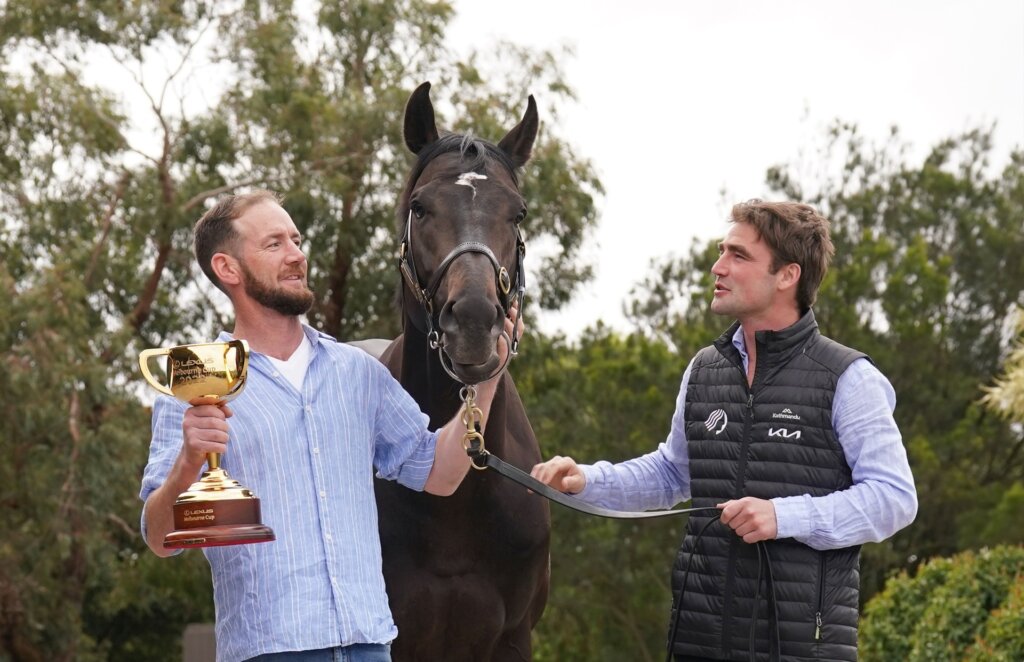
IH: The spring racing carnival is the peak racing period in Victoria and it’s now upon us. How important is this period of racing to your overall business?
AM: The carnival has a rich heritage that has helped build Australia’s love of horse racing and is our primary window to engage new audiences. This year marks the 165th Melbourne Cup, 149th Caulfield Cup and 105th Cox Plate, all world class races which spearhead a great social and cultural experience for racegoers. Our spring racing carnival is among Australia’s largest major events and includes the biggest attendances in Australian racing by far.
In 2024 we had 600,000 attendees across the three months of spring and, importantly, we generated $780 million in economic benefit for the state of Victoria. Racing helps drive tourism, hospitality and retail throughout spring so the broader community wins and it is one of the reasons our government is a great supporter of racing.
Not only do we have 22 Group 1 races in Melbourne during the carnival, we have 26 Country Cup meetings which are major events in the regional areas of Victoria which unite local communities and drive investment in those areas. We have townships with a population of only 600 people who attract over 3,000 people to their Cup meeting which is great for both racing and the community.
Our domestic wagering turnover across the three months of spring last year was $2.7 billion which represents between 35 and 40 per cent of our annual turnover despite only being around 25 per cent of our product. The four days of the Melbourne Cup carnival at Flemington, which were the four highest attended race meetings in Australia last year, generated $670 million in domestic turnover which is around 8 or 9 per cent of our annual turnover.
When you consider that we run around 530 race meetings across the state of Victoria each year, that demonstrates the scale and importance of those four meetings alone to racing and the state of Victoria. Those races also enjoy strong international engagement from all over the world.
The Melbourne Cup is one of the world’s most renowned and iconic races. In Australia it is literally the race that stops a nation – we even have a public holiday for the race. Everyone gets involved, whether at barbecues, social events or on track. Our domestic wagering turnover on the Melbourne Cup is five times higher than any other single race in Australia, last year attracting $214 million domestically. That’s the fifth consecutive year it has surpassed $200 million.
Over 90,000 people attended last year’s Melbourne Cup which was the highest since 2016. There was a great positive vibe about racing and we’re seeing that continue into this racing season. ∎
